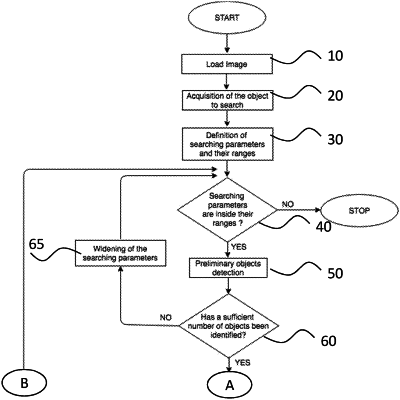| CPC G06T 7/0012 (2013.01) [G06T 7/11 (2017.01); G06T 7/90 (2017.01); G06T 2207/30024 (2013.01)] | 11 Claims |

|
1. Method for processing a digital tissue sample image comprising:
Acquiring an input about a target object class to be searched within a image;
Associating a set of morphological and chromatic parameters to a pre-set initialization value range selected from a library on the basis of the input;
Processing a tissue image on the basis of a set of selected parameters via a first segmentation algorithm to identify objects within a desired target object class;
Providing a result set comprising the objects complying with parameters within a pre-set initialization value range;
Checking whether a count of objects within the result set is below a predefined threshold and
either entering an initial loop if the count is below the predefined threshold, the initial loop comprising, for each iteration, the steps of providing an initial loop value range for at least one morphological and/or chromatic parameter, the initial loop value range being broader than the pre-set initialization value range or than the initial loop value range of the previous iteration, and the step of repeating said steps of processing, providing and checking;
or entering an adaptation branch comprising:
generating an adapted value range for said parameters based on the objects within the result set complying with the step of checking via a feature extraction algorithm, the adapted value range being broader than the initialization value range;
processing the tissue image via a second segmentation algorithm to identify objects complying with the parameters within the adapted value range to provide an adaptation loop result set;
applying a similarity test to the adaptation loop result set and a set comprising the result set complying with the step of checking.
|